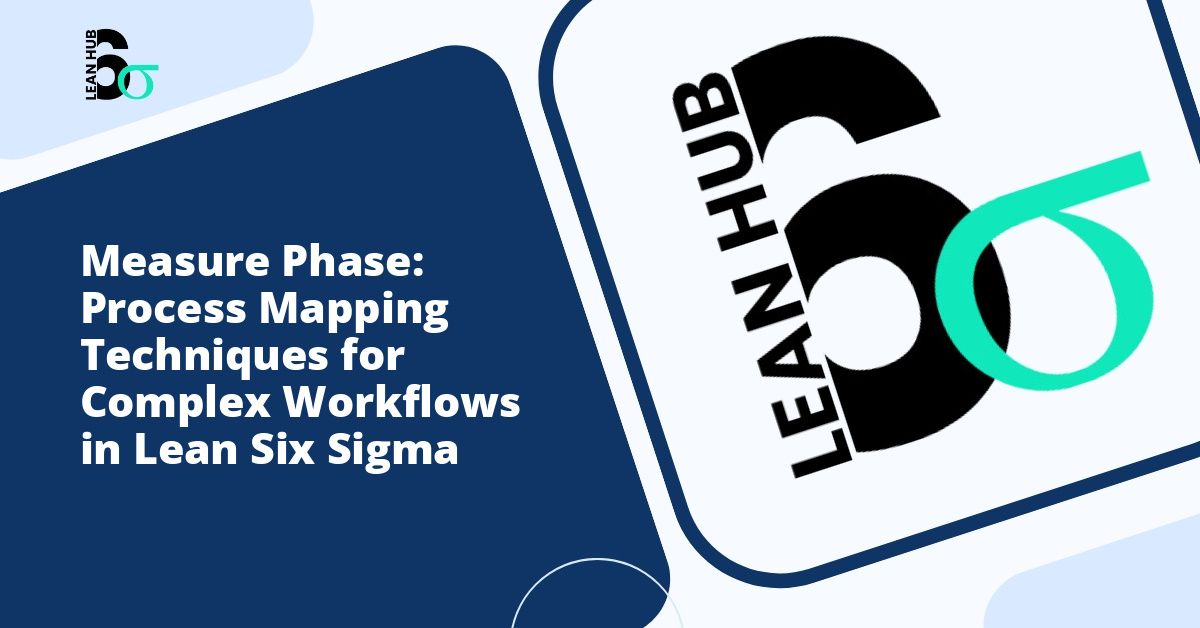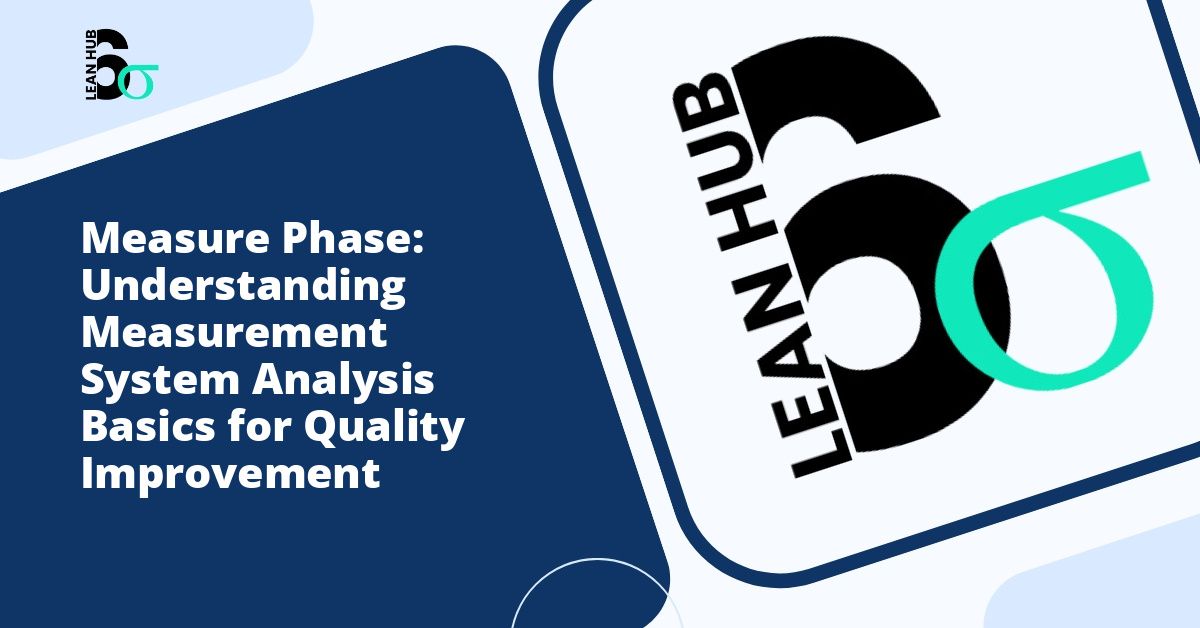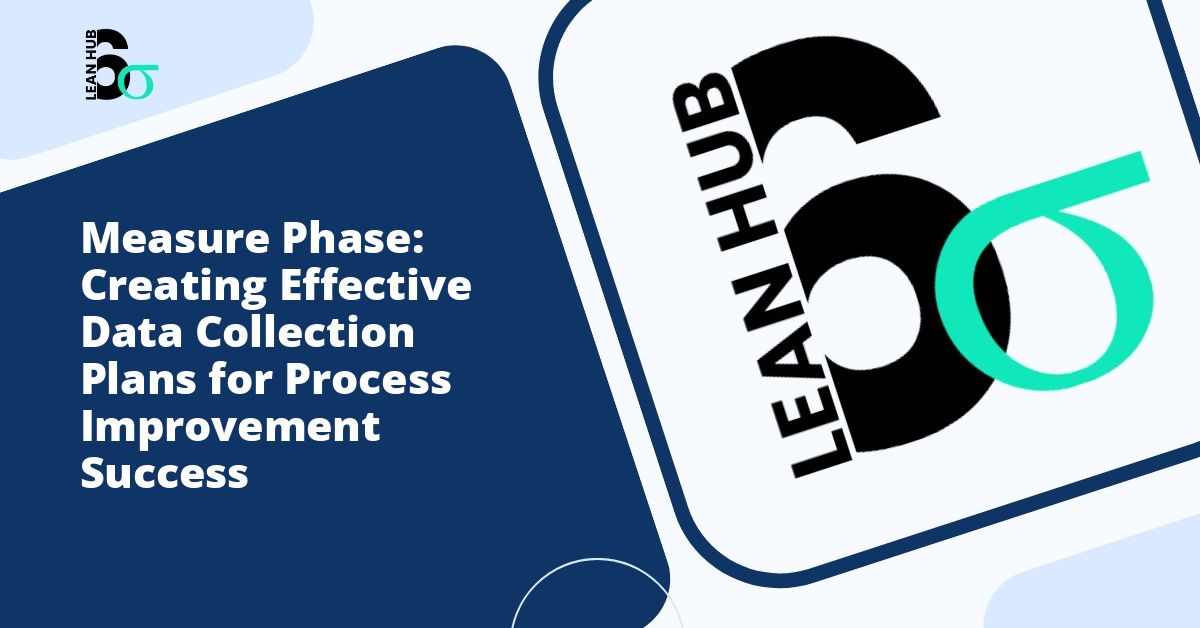The Measure phase represents a critical juncture in the continuous improvement journey, where data collection and analysis transform abstract problems into quantifiable challenges. For professionals new to process improvement methodologies, understanding this phase is essential for driving meaningful organizational change and achieving measurable results.
Understanding the Measure Phase in Context
Before diving into the specifics of the Measure phase, it is important to understand where it fits within the broader framework of process improvement. In lean six sigma methodologies, the Measure phase follows the Define phase and precedes the Analyze phase. While some practitioners may recognize phase variations across different methodologies, the core principles remain consistent: collect accurate data to establish a baseline and understand current performance levels. You might also enjoy reading about Process Capability Analysis Explained: Understanding Cp vs. Cpk vs. Pp vs. Ppk in Quality Management.
The Measure phase serves as the foundation for all subsequent improvement activities. Without reliable measurements, teams cannot accurately assess whether their interventions produce desired results or simply create the illusion of progress. This phase bridges the gap between identifying a problem and understanding its magnitude and characteristics. You might also enjoy reading about DPMO Calculation: Defects Per Million Opportunities Made Simple for Quality Management.
Primary Objectives of the Measure Phase
The Measure phase encompasses several interconnected objectives that work together to create a comprehensive understanding of the current state. These objectives guide teams through systematic data collection and validation processes. You might also enjoy reading about Control Charts Basics: Understanding Variation in the Measure Phase of Lean Six Sigma.
Establishing Baseline Performance
The first objective involves documenting current performance levels with precision. This baseline serves as the reference point against which all future improvements will be measured. Without an accurate baseline, teams cannot demonstrate the impact of their improvement efforts or justify resource allocation for change initiatives.
Identifying Key Metrics
Teams must determine which metrics best represent the problem at hand. This requires careful consideration of what truly matters to customers, stakeholders, and the organization. The selected metrics should directly relate to the problem statement developed during the Define phase and provide actionable insights rather than vanity measurements that look impressive but offer little practical value.
Validating Measurement Systems
Before collecting extensive data, teams must ensure their measurement systems produce reliable and consistent results. A measurement system that lacks accuracy or precision can lead to faulty conclusions and misguided improvement efforts. This validation step prevents teams from building improvement strategies on a foundation of unreliable data.
Essential Tools and Techniques
The Measure phase employs various tools and techniques that help teams collect, organize, and validate data effectively. Understanding these tools enables beginners to approach measurement activities with confidence and structure.
Data Collection Plans
A well-constructed data collection plan serves as the roadmap for measurement activities. This document outlines what data will be collected, how it will be gathered, who will collect it, and when collection will occur. The plan should also specify sample sizes, data sources, and operational definitions to ensure consistency across all collection efforts.
Creating a comprehensive data collection plan prevents common pitfalls such as collecting irrelevant data, missing critical information, or gathering data inconsistently. This upfront planning investment saves considerable time and resources during later phases.
Process Mapping
Visual representations of processes help teams identify where measurements should occur and understand the relationships between different process elements. Process maps reveal opportunities for data collection that might otherwise be overlooked and help teams understand how various inputs affect outputs.
For beginners, starting with simple flowcharts provides sufficient detail without overwhelming complexity. As familiarity grows, more sophisticated mapping techniques can be incorporated to capture additional process nuances.
Measurement System Analysis
In lean six sigma practice, measurement system analysis evaluates whether measurement tools and processes produce trustworthy data. This analysis examines factors such as repeatability, reproducibility, accuracy, and stability. Teams conduct studies such as Gage R&R (Repeatability and Reproducibility) to quantify measurement system variation.
For beginners, understanding that measurement systems themselves introduce variation is crucial. A measurement showing process variation might actually be detecting measurement system problems rather than true process variation. Validating measurement systems before extensive data collection prevents wasted effort and incorrect conclusions.
Common Challenges and How to Overcome Them
Beginners typically encounter several challenges during the Measure phase. Recognizing these obstacles in advance allows teams to develop strategies for addressing them proactively.
Data Availability Issues
Organizations frequently discover that the data they need does not exist in readily accessible formats. Historical data may be incomplete, stored in incompatible systems, or simply never collected. When facing data availability challenges, teams must decide whether to work with available data, implement new data collection systems, or use sampling techniques to gather sufficient information.
Overwhelming Data Volume
The opposite problem also occurs when teams have access to vast amounts of data but struggle to identify which information truly matters. This situation requires disciplined focus on metrics that directly relate to the problem statement and customer requirements. Teams should resist the temptation to measure everything simply because they can.
Resistance to Measurement
Employees sometimes view measurement initiatives with suspicion, fearing that data will be used to evaluate individual performance negatively. Overcoming this resistance requires clear communication about measurement purposes, ensuring confidentiality where appropriate, and demonstrating how improvements benefit everyone involved in the process.
Best Practices for Effective Measurement
Adopting proven best practices helps beginners navigate the Measure phase successfully and avoid common mistakes that derail improvement projects.
Start with Clear Operational Definitions
Operational definitions eliminate ambiguity by specifying exactly what is being measured and how. For example, rather than measuring “customer satisfaction,” an operational definition might specify “the percentage of customers rating their experience as 4 or 5 on a 5-point scale within 24 hours of service completion.” This precision ensures consistent data collection across different people, locations, and time periods.
Focus on Process Metrics, Not Just Outcomes
While outcome metrics indicate whether goals are being met, process metrics reveal how outcomes are achieved. Balancing both types provides a more complete picture. Process metrics often serve as leading indicators, providing early warning when problems develop, while outcome metrics function as lagging indicators that confirm results.
Document Everything
Thorough documentation ensures that measurement methods can be replicated and verified. Recording data sources, collection methods, dates, and any anomalies or special circumstances creates an audit trail that supports data integrity. This documentation proves invaluable when questions arise about measurement validity or when transitioning projects between team members.
Transitioning from Measure to Analyze
The Measure phase concludes when teams have collected sufficient reliable data to establish baseline performance and understand current state variation. At this point, attention shifts to the Analyze phase, where teams investigate root causes and identify improvement opportunities.
However, measurement does not end when the Measure phase concludes. Throughout the improvement project lifecycle, teams continue collecting data to monitor changes, verify improvements, and ensure sustainability. The measurement foundation built during this phase supports all subsequent work.
Conclusion
The Measure phase transforms process improvement from subjective opinion into objective analysis. For beginners entering the world of continuous improvement, mastering measurement principles provides the foundation for successful project execution. By establishing baseline performance, validating measurement systems, and collecting reliable data, teams position themselves to identify root causes and implement effective solutions.
Success in the Measure phase requires patience, attention to detail, and commitment to data integrity. While the technical aspects may seem daunting initially, the systematic approach provided by lean six sigma methodologies guides practitioners through each step. As you recognize phase requirements and develop measurement competencies, you will discover that accurate measurement illuminates the path toward meaningful improvement.
Remember that every expert began as a beginner, and the skills developed during the Measure phase transfer across industries, processes, and improvement methodologies. By investing time to understand and properly execute measurement activities, you build capabilities that will serve throughout your continuous improvement journey.








